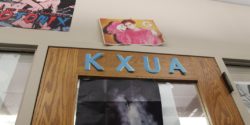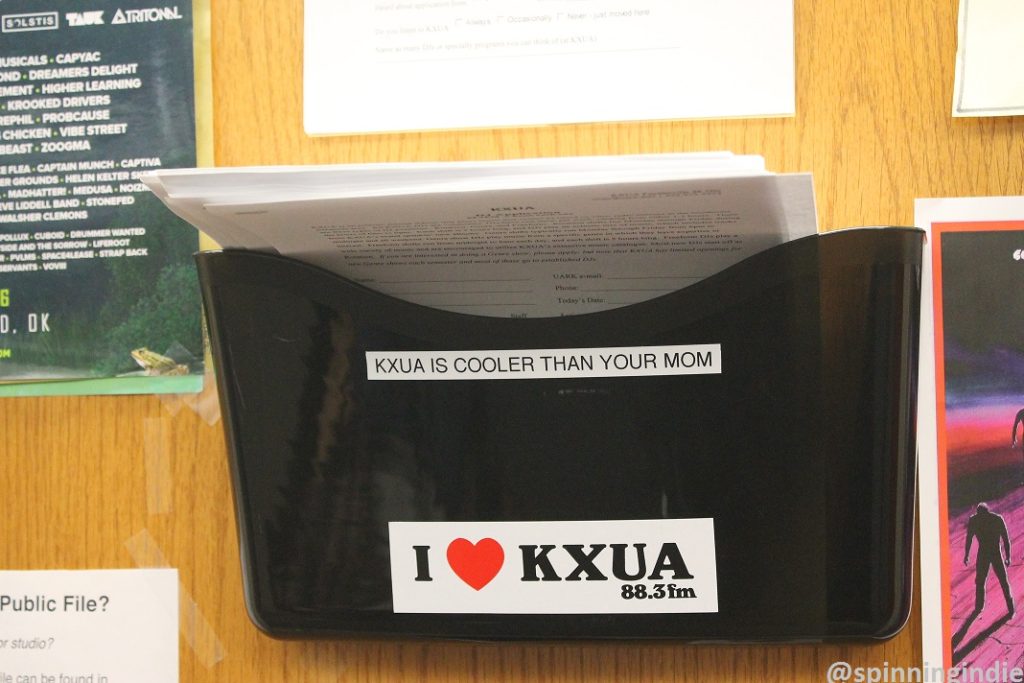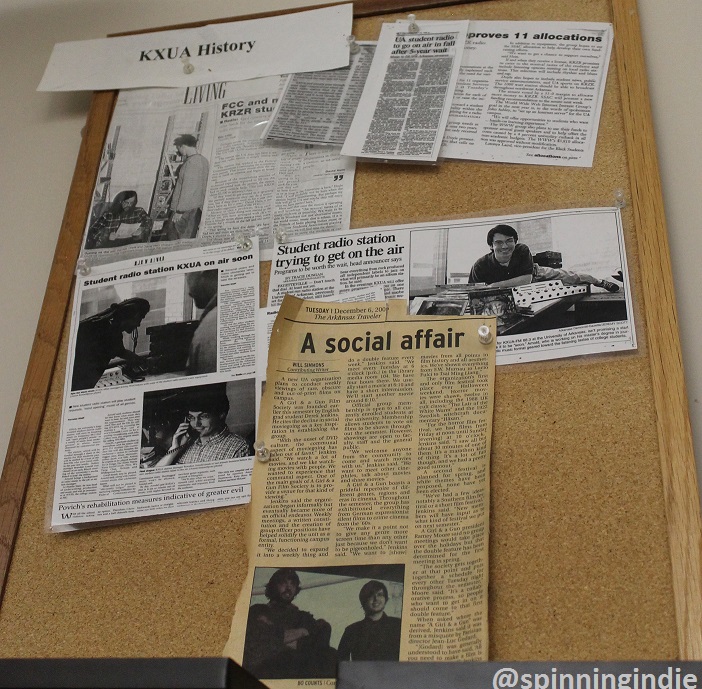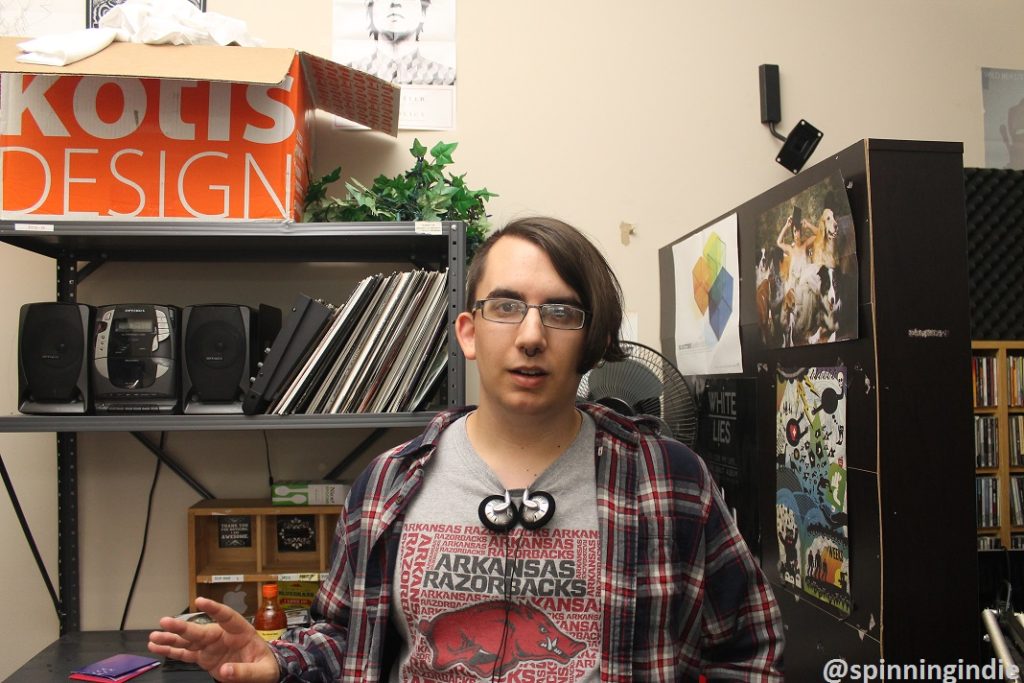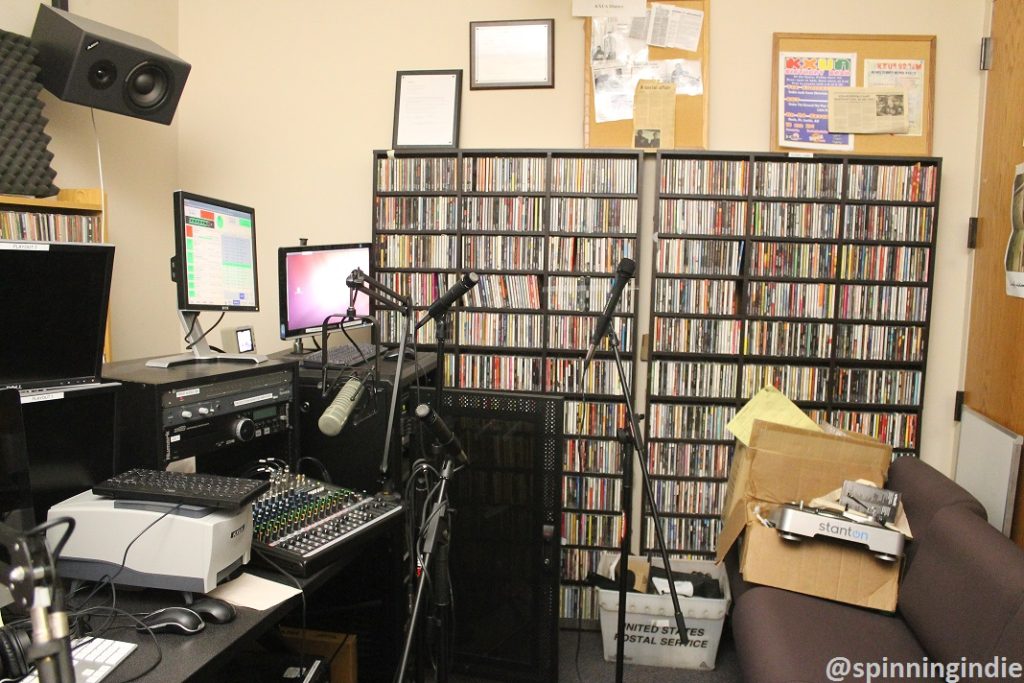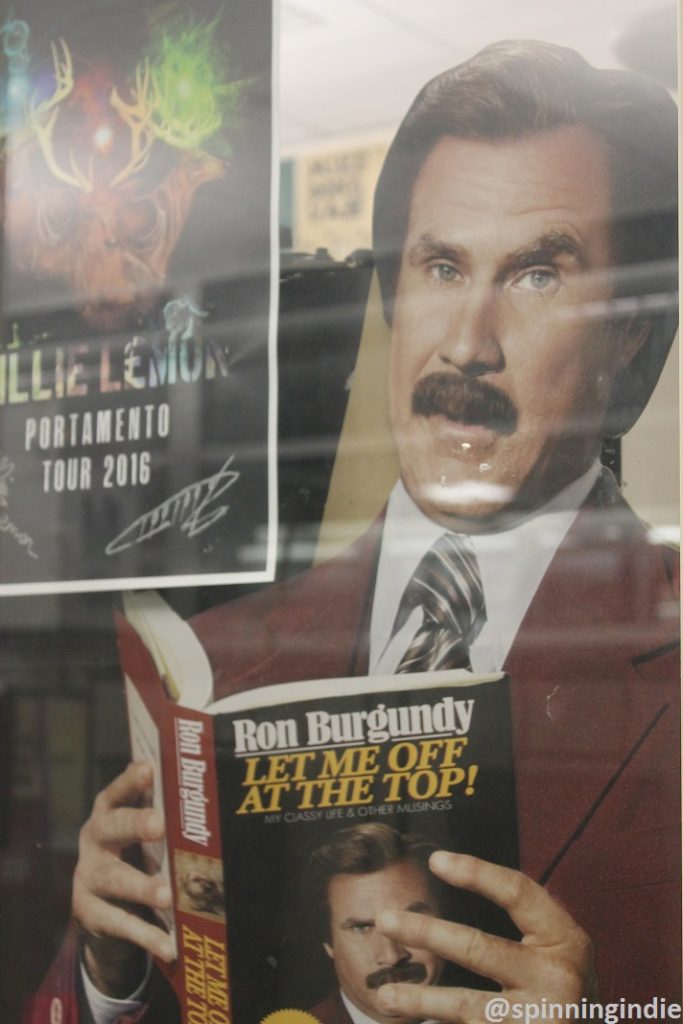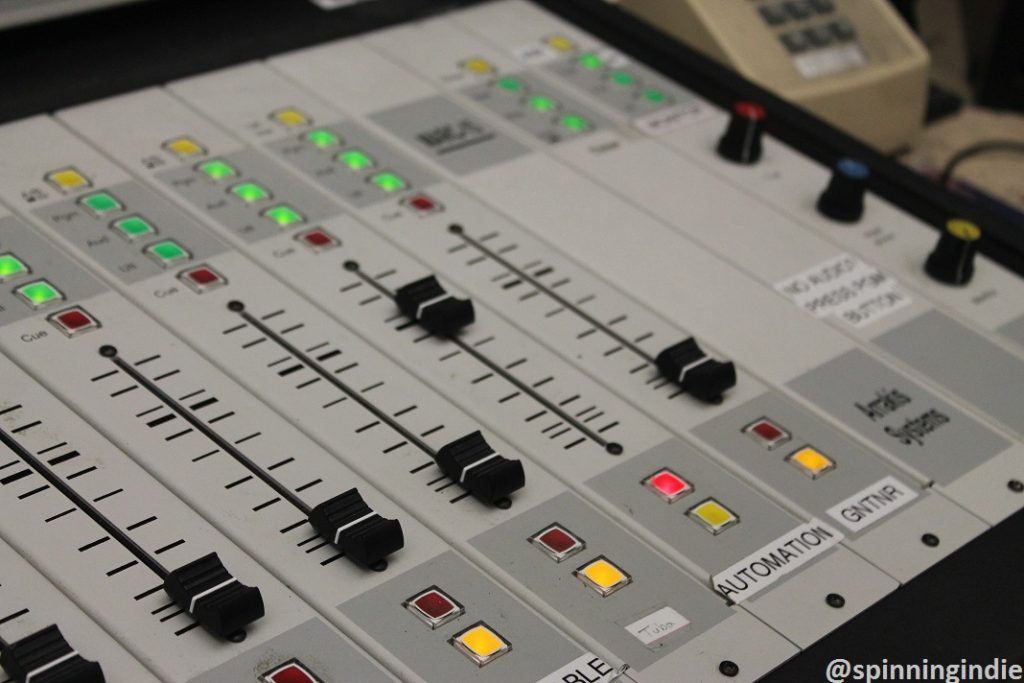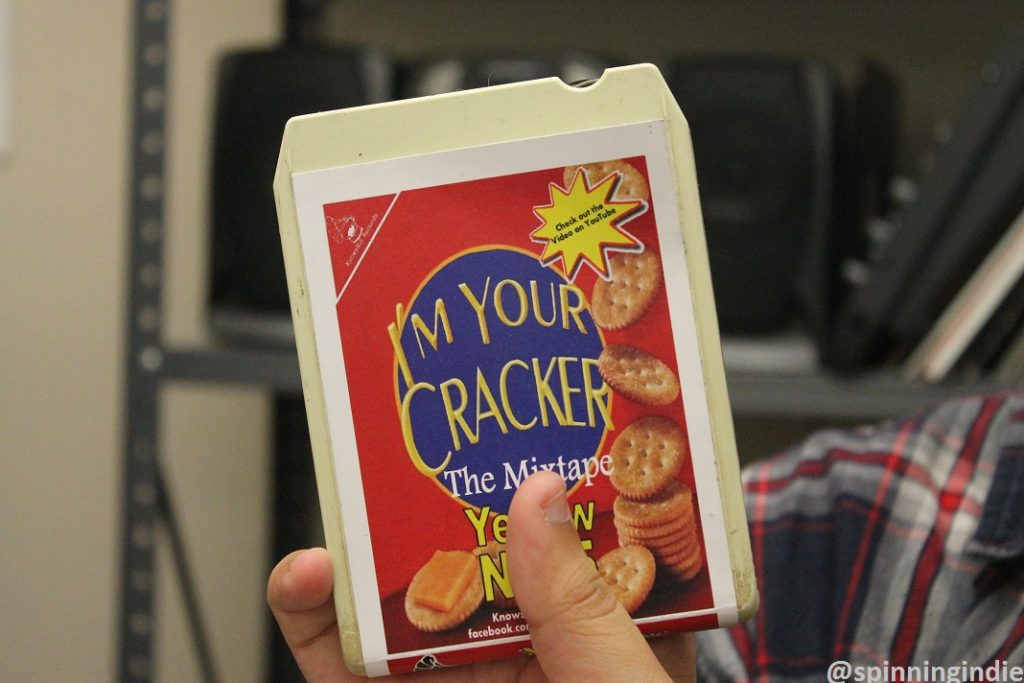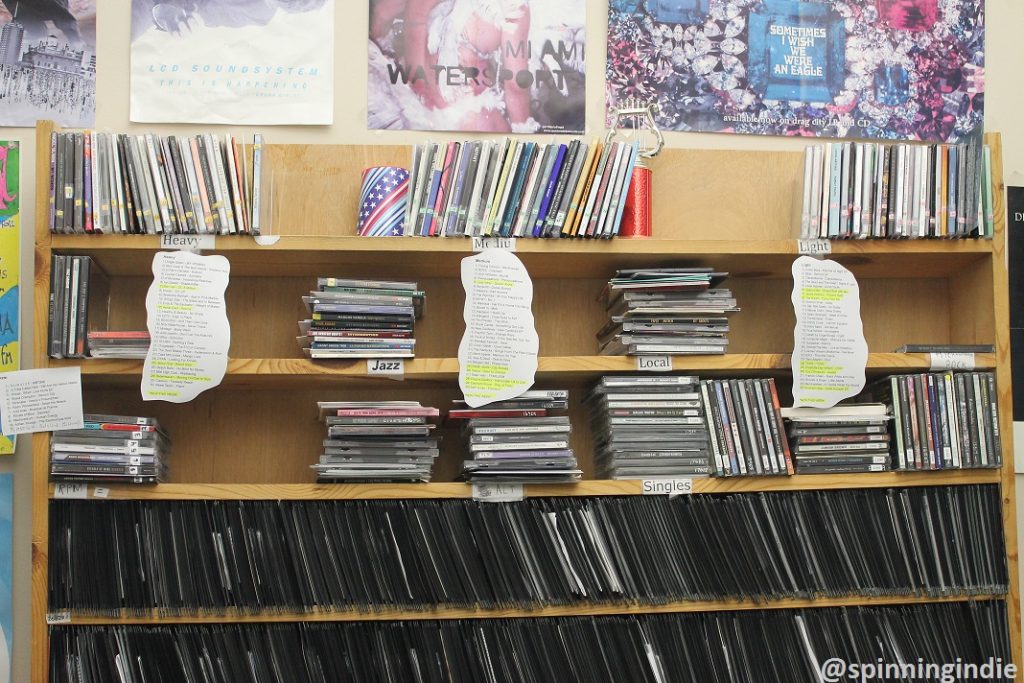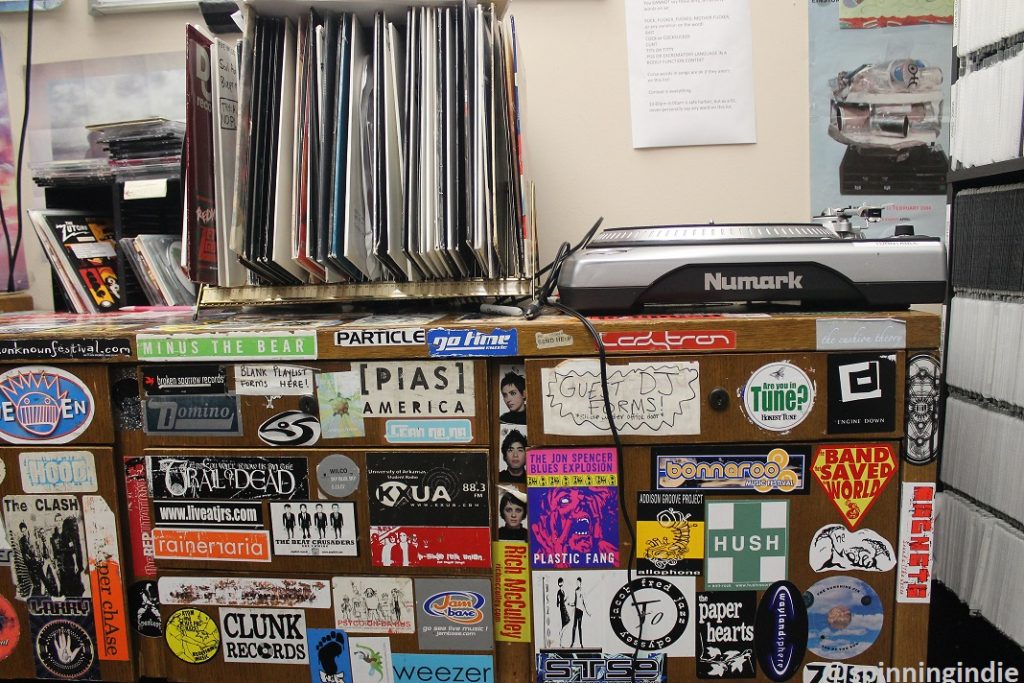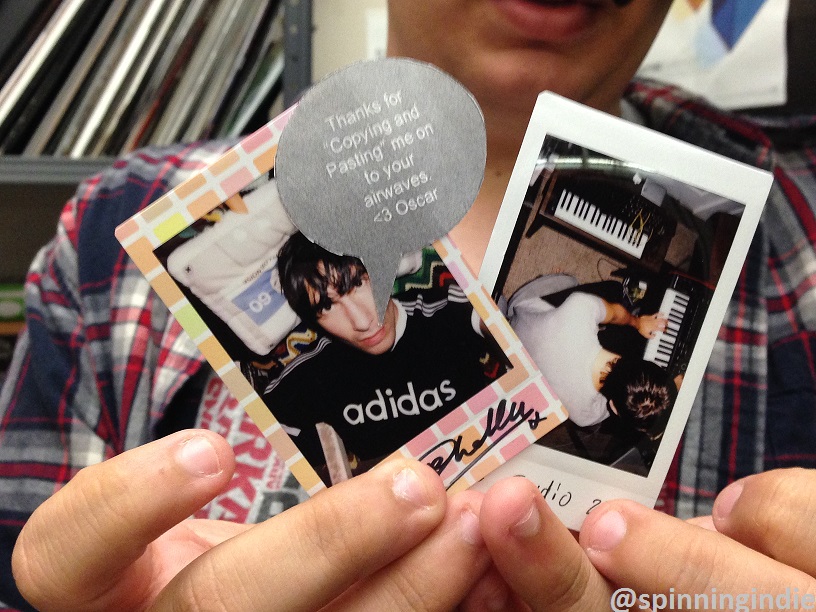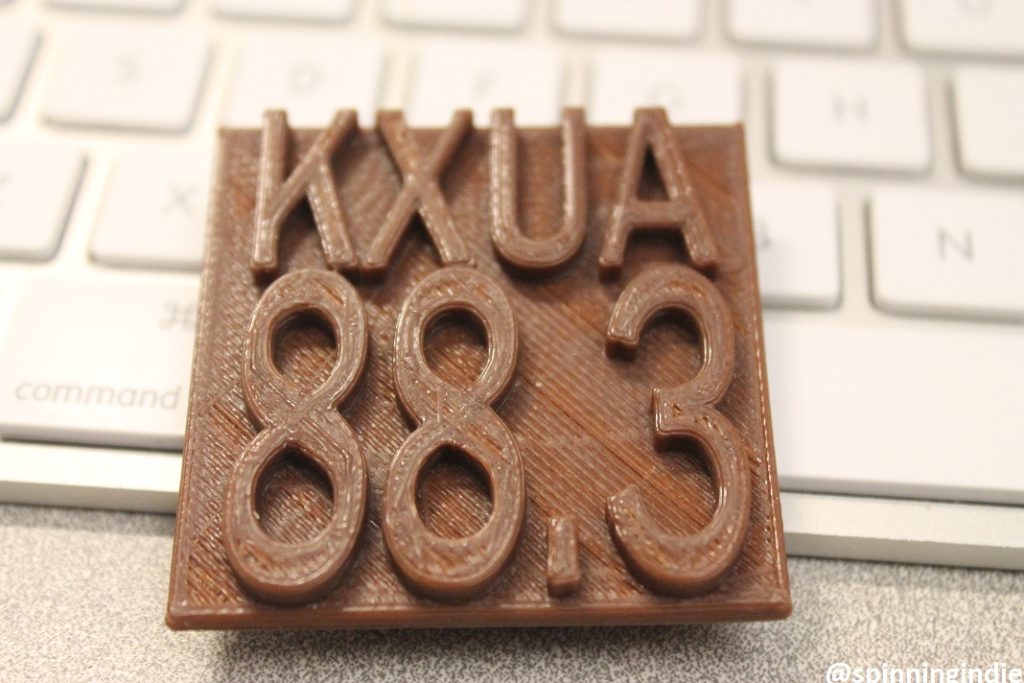Oh, how I love a college radio road trip. After landing two hours late in Little Rock, Arkansas; I grabbed a rental car and hit the highway for a scenic drive to Fayetteville on October 6, 2016. A gorgeous journey through lush landscape, I was amazed to see some things that are completely unfamiliar in California, including armadillo road kill and Donald Trump billboards. As darkness fell, I arrived on the University of Arkansas campus in Fayetteville, home of college radio station KXUA.
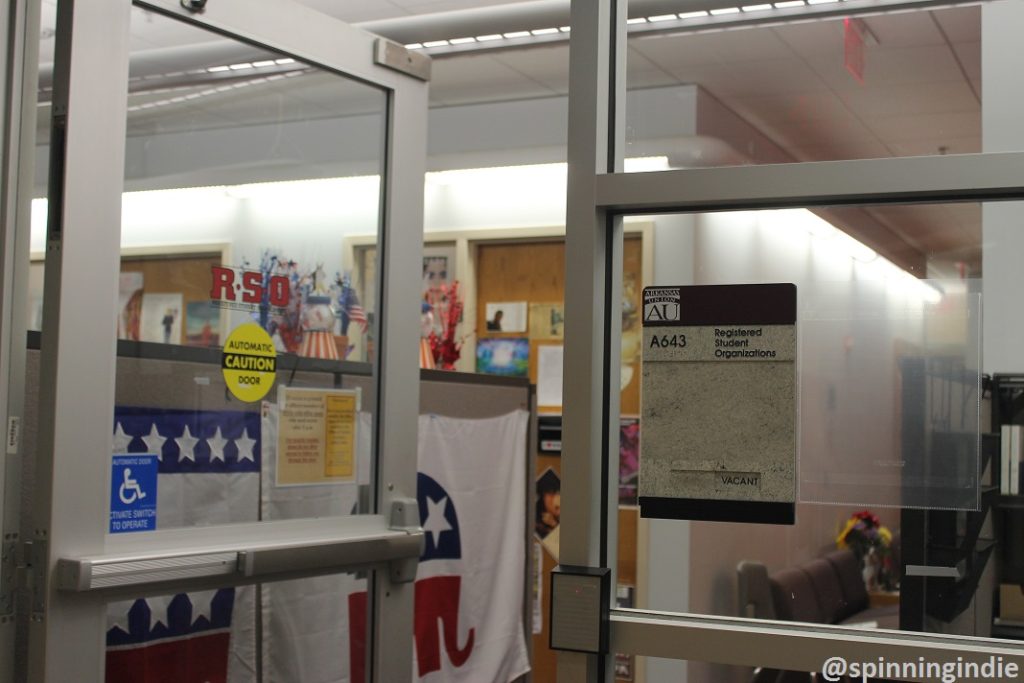
Registered Student Organizations area in the Union building. KXUA office in background. Photo: J. Waits
Station Manager Lucas Coberly met me in the parking lot of the school’s union building and walked me up to KXUA’s sixth floor digs. It was a Thursday night and the station was fairly quiet, although we ran into a few folks coming in for their radio show.
Having written about KXUA for my Spinning Indie 50 State Tour back in 2008, I was excited to finally see the station in person. Student radio has been a tradition at University of Arkansas since at least the 1970s, with KUAF-FM launching in 1973. According to KXUA, in 1986, KUAF became an NPR affiliate and several years later, in 1989, students launched a new carrier current campus-only radio station, KRFA, which continued until 1994. After that station ceased, students organized in order to bring a new FM radio station to campus. Those efforts finally paid off in 2000, with the launch of student-run FM radio station KXUA over 88.3 FM.
Today, there are around 70 participants at KXUA, which is managed by a student-led executive board. On-air hosts must be affiliated with the university, meaning that not only students, but also staff and faculty can potentially get on the air. Coberly mentioned that while most University of Arkansas students hail from Arkansas and Texas, there are quite a few international students from all over the world and that the station has benefited from this diversity, attracting show hosts from Asia and Latin America.
I started my visit in KXUA’s office/recording studio. Half of the room feels office-like, with a desk, shelving, microwave (adorned with a Bob sticker from Church of the Subgenius) and a mini fridge. The other half contains a couch, recording equipment, servers, shelves of CDs and a small video monitor airing the PBS television station from which KXUA receives its EAS tests and alerts. While I was there, one of the servers emitted an eerie hum and the TV station was showing a creepy old movie, making for a particularly spooky feeling in the studio.
A window looked out onto an open office area that was populated by other student organizations, with the closest neighbor a Republican student group. Peering out of the KXUA room was a life-size Ron Burgundy cardboard cut-out, something that is starting to become a bit of a radio station staple (I’ve seen them at Radio K and at WMFO).
Coberly talked to me about the station’s emphasis on unheard music, telling me that KXUA has a policy that DJs cannot play top 40 music from the past 40 years. He added that the station is a “refuge for all sorts of music,” explaining that the range of sounds and shows includes shoegaze, Caribbean music, old time radio dramas, soundtrack music, and more. At the time of my visit, plans were in the works to add a news-oriented podcast to the schedule and this week Coberly reported to me that KXUA “did air our first episode of our news podcast, Newswave, on October 14.” The show will generally be produced every two weeks going forward. Coberly was also reaching out to potential partners in the hopes of developing an original radio drama for KXUA.
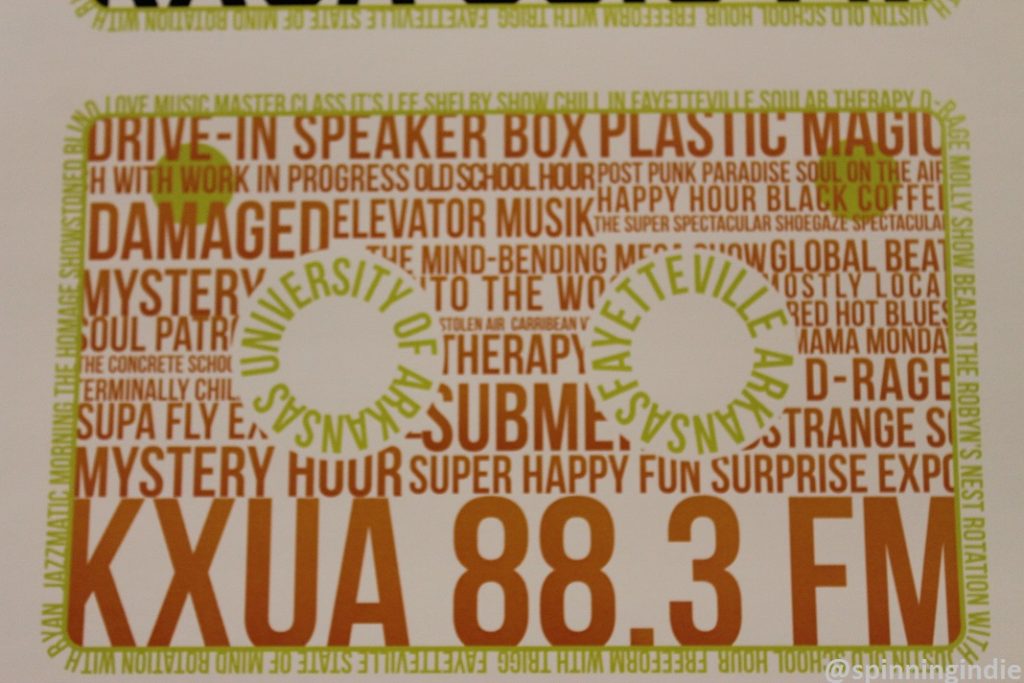
KXUA promotional piece expressing variety of programming aired on the college radio station. Photo: J. Waits
Off-air activities at KXUA have included station-hosted concerts and the production of a printed ‘zine. Additionally, KXUA DJs have played at campus events, which has helped to bring more attention to the station. Station members have also traveled to music festivals (including a few in New Orleans), covering them for KXUA.
DJs can play music from a variety of formats, including cassettes, CDs, digital files and vinyl. Coberly grabbed a recently recorded 8-track tape from an office shelf and told me that it had been sent to the station within the past year. Since KXUA doesn’t have an 8-track player, they haven’t been able to listen to the tape, although they were able to hear the music off of a flash drive that was sent with the tape. Coberly has played cassettes on his show and even came to the station one time just so that he could play a cassette that he had purchased on Bandcamp.
For the most part, Coberly plays CDs on his radio show and explained that the station’s current “rotation” music (new releases that are added to KXUA) is mainly on CD. The on-air studio (a short walk around the corner from the KXUA office) is outfitted with 4 CD players, cassette deck, turntable, and an auxiliary cable. The walls of the room are lined with shelves of CDs and a small collection of vinyl records resides near the sound board.
Coberly mentioned that some DJs have done all-vinyl shows and others have used the auxiliary input for turntable decks in order to do live mix shows. He added that he loves being able to come into the studio to play “off the wall music” and particularly enjoys being on the air late at night when he might pull out “obnoxious electronic music” or tracks featuring ping pong ball percussion. He explained that KXUA has been a great way for him to not only keep up with music, but also to meet like-minded folks.
In keeping with that spirit of making connections, Coberly told me about his plans to visit a few college radio stations in Boston during an upcoming trip to the East coast for the College Broadcasters Inc. (CBI) conference. He explained,
I really want to learn how other stations operate since I’ve only been in my own. So, I feel like if I go to these other stations while I have the opportunity to do so, I might come across something that might be totally obvious to someone else, but not to me and I’ll have something to bring back home with me, so that that way we can improve. And it’s also why we go to CBI as well is because we want to learn and improve the station. And I think that actually seeing another person’s radio station in the flesh is an even better way to do that because you get to see how things are in practice. That’s my primary reason for doing that.”
When I saw Coberly at the CBI conference a few weeks after my visit to KXUA, he shared that he had managed to see a few Boston college radio stations, including WRBB (Northeastern University), WZBC (Boston College) and WMBR (Massachusetts Institute of Technology). As a bonus, he also went on a tour of Drexel University’s college radio station WKDU in Philadelphia (which I took part in as well). While writing up this piece, I reached out to him to see what the tours had meant to him. He explained, “Perhaps what I enjoyed the most is learning that college radio isn’t a single standard by any means. There was so much variation in just the four stations that I saw that I think I only now can appreciate how unique our stations are. But I also feel like there’s a community for college radio at large that I haven’t tapped into just yet. I do plan on visiting more when the opportunity strikes, and I hope especially to collaborate more with other college stations in Arkansas.”
I couldn’t be happier to hear about others making these college radio connections and am glad to now know another radio station tour veteran. Thanks so much to Lucas Coberly for the great visit to KXUA. You can hear more from our visit on episode #69 of the Radio Survivor Podcast. This is my 115th radio station field trip report, with many more to come from visits to stations in California, Arkansas and Pennsylvania. See my most recent field trips on Radio Survivor and peruse a full list of my station tour reports on Spinning Indie.

